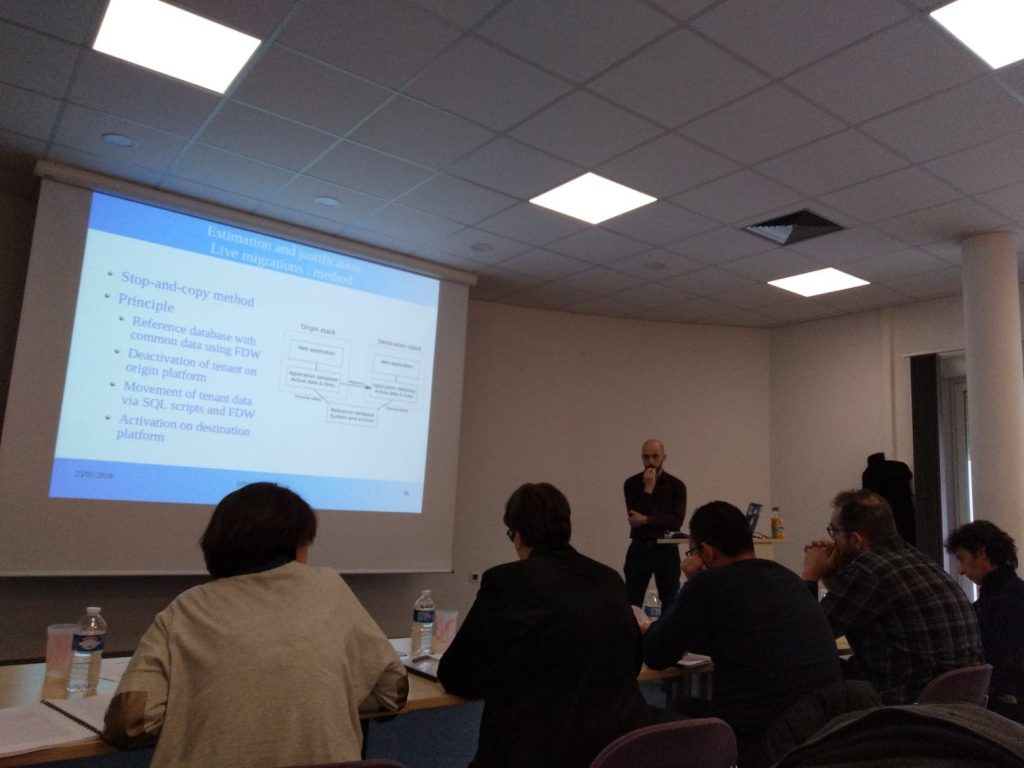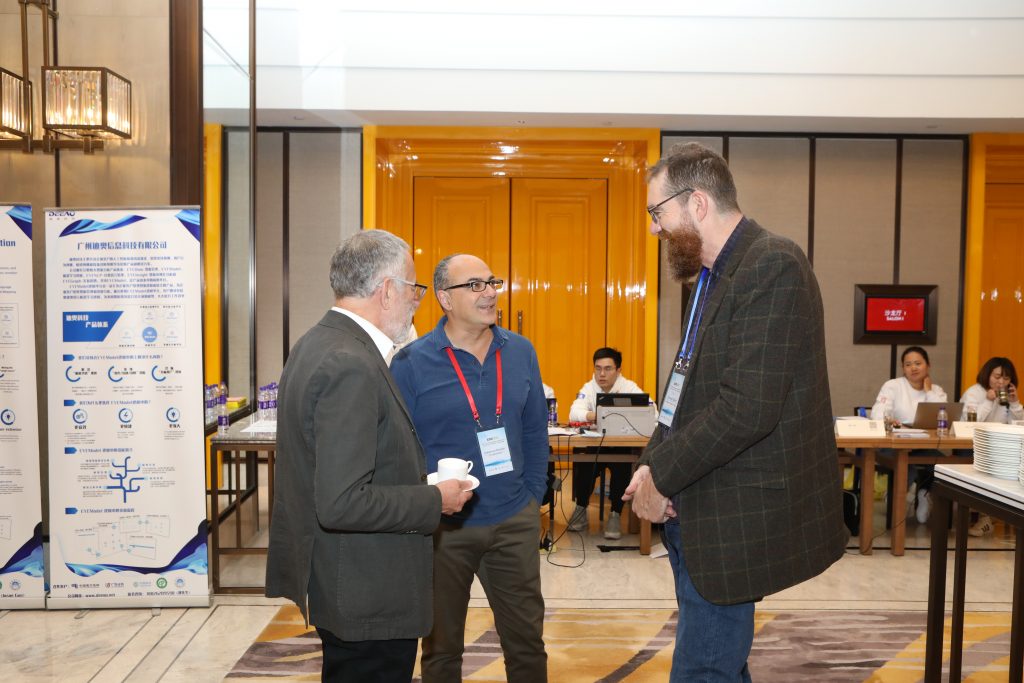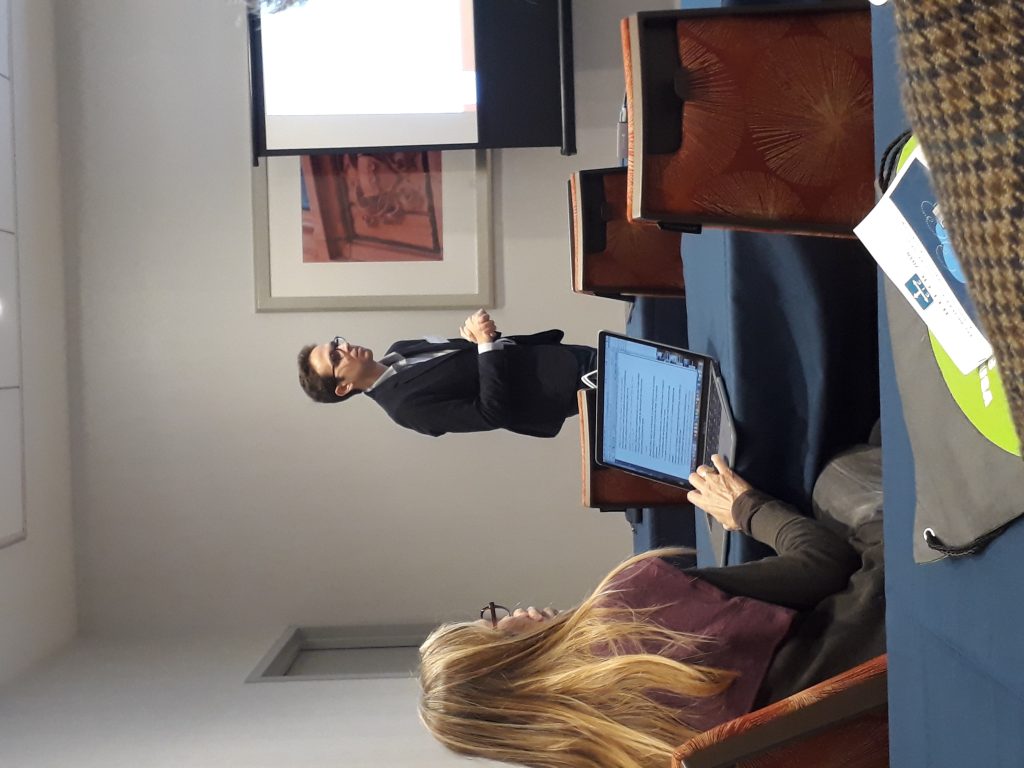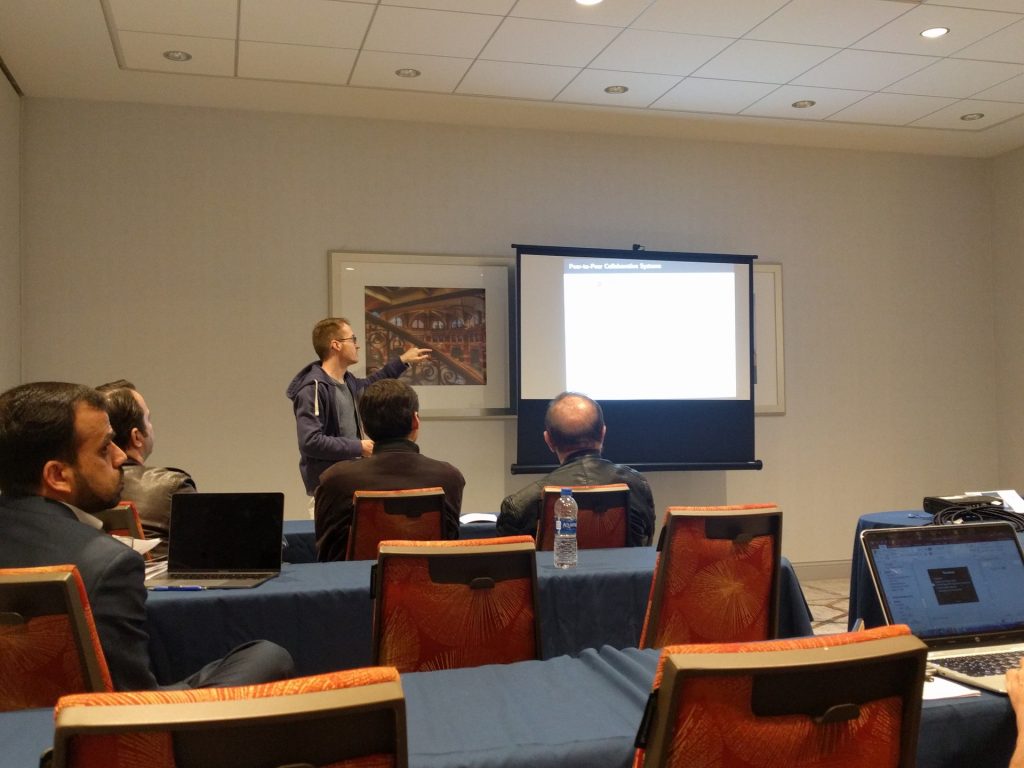A collaborative application allows multiple users to edit a shared content.
Collaborative peer-to-peer environments aim to design applications with
desirable properties: high-availability, low-latency, fault-tolerance,
and scalability.
Every peer (user) modifies her own copy of the content.
Concurrent modifications of the copies lead to their divergence.
Replication protocols are responsible for the convergence of copies.
These protocols assume the absence of malicious peers that compromise
the convergence of copies.
Can we secure the convergence of copies and preserve the properties of
collaborative peer-to-peer environment?
We propose two protocols to secure convergence.
The first protocol maintains a replicated and unforgeable log that
stores the modifications of the content.
Peers preserve the full log in order to foil the attacks of malicious
peers and to transmit it to new peers.
The second protocol enables the peers to truncate their log.
The log truncation relies on the concept of Stability.
A modification becomes stable once every modification added in the log
depends on it.
To join the collaboration, a peer retrieves a copy of
the content and a truncated log used for checking the copy authenticity.
A Conflict-free Replicated Data Type (CRDT) encapsulates a replication
protocol.
Sequence CRDTs generally assume the integration of content modifications
in a causal order.
A delayed integration propagates slowness across the system.
The connection of a peer may lead to the integration of multiple
modifications.
Can we remove these delays and these costly integrations?
We formalize a family of sequence CRDTs and we propose their
synchronization using delta states.
Delta states can be integrated in any order.
They are able to summarize several modifications.
We propose a sequence CRDT that takes advantage of our approach.
Jury
—-
Reviewers:
Emmanuelle Anceaume, directrice de recherche IRISA
Pascal Molli, professeur à l’Université de Nantes
Examiners:
Steve Kremer, directeur de recherche Inria Grand Est
Esther Pacitti, professeure à l’Université de Montpellier 2
Supervisors:
François Charoy, professeur à l’Université de Lorraine
Gérald Oster, maître de conférence à l’Université de Lorraine






